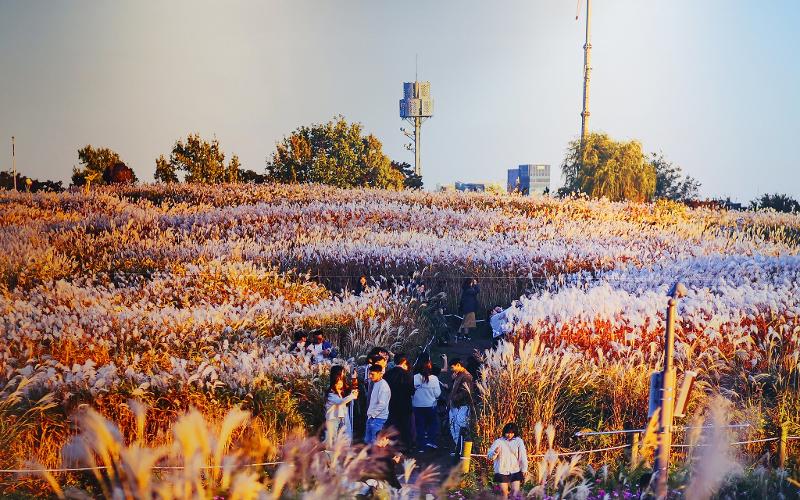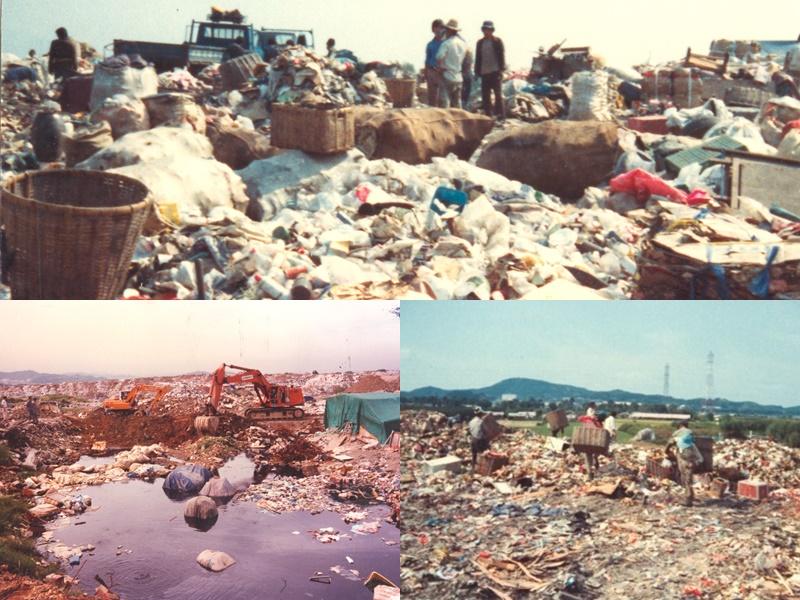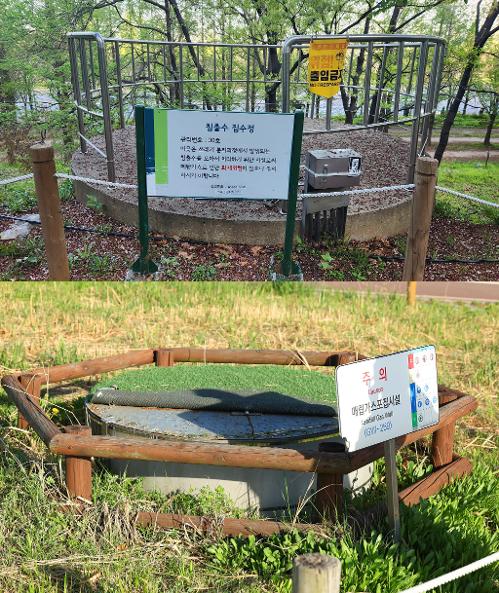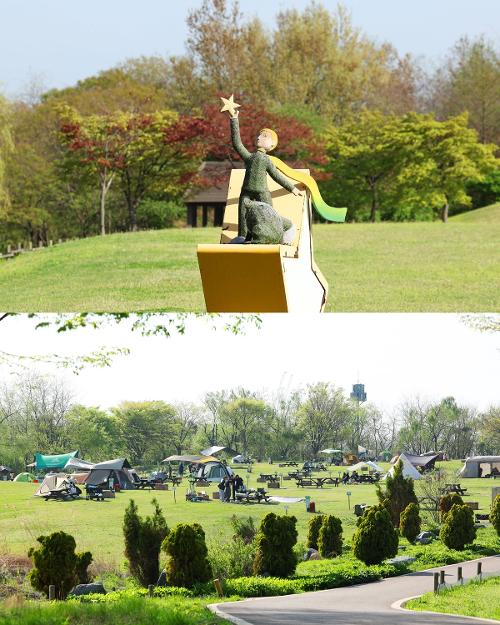
Haneul Park, famous for hosting the annual Seoul Silver Grass Festival, used to be a large landfill until 1993. (Seobu Parks & Landscape Management Office)
By Lee Jihae
May 1, aka May Day or International Labor Day, celebrates the value of work around the world. Yet the occasion honors something else: the day when a massive landfill on the small island Nanjido in Seoul, was reborn as an ecological park.
Haneul (Sky) Park and Noeul (Sunset) Park, both of which were opened on May 1, 2002, ahead of the FIFA World Cup soccer finals that year jointly hosted by Korea and Japan, are the results of a large environment restoration by the Seoul Metropolitan Government.
In fall, the silvery grass at Haneul blows like waves and people flock to a camping site at Noeul. The beautiful scenery there makes it hard to believe that the two sites were part of a gargantuan landfill.

Between 1978 and 1993, the ecological parks Haneul and Noeul in the Sangam-dong neighborhood of Seoul's Mapo-gu District were part of a giant landfill. (Seobu Parks & Landscape Management Office)
Located in the Sangam-dong neighborhood of Seoul's Mapo-gu District, Nanjido is bordered by Goyang, Gyeonggi-do Province, to the northwest and by the Hangang River to the southwest.
From 1978 to 1993, the landfill was where trash from throughout Seoul was delivered and dumped. The concept of separation for recyclables was nonexistent at the time, as all types of garbage ranging from food waste and household electronics to coal briquettes were buried there.
This resulted in a 98 m-high mountain comprising 92 million tons of trash in this area.
People mockingly called the place samdado, or an island with many of three things -- dust, odor and flies. The term usually refers to Jeju Island, which is known for having many rocks, women and wind.
The bigger problem was methane emitted by the waste that caused about 1,390 fires over 15 years in the area. Contaminated wastewater also flowed into the Hangang to threaten its ecosystem.
Shutdown and launch of restoration
In 1993, the city government abruptly shut down the landfill after its capacity was reached. A turning point appeared after the country won the right to cohost the 2002 World Cup, prompting authorities to decide on building a stadium nearby and launch a massive project to turn Nanjido into an eco park.
The goal was clear: turn the wasteland into something teeming with life. Work began on the project to transform the area.

A well to collect wastewater (top) and a facility to gather methane at Hangeul Park collected and processed leachate and the gas generated during the waste separation process. (Lee Jeongwoo)
Life-saving restoration technology
The stabilization process was divided into three stages. First, 106 gas extraction wells were installed throughout the landfill, transporting methane collected through pipelines for use as an energy source for heating and cooling by Seoul World Cup Stadium, 6,000 households in Sangam-dong and Digital Media City. Thus the toxic gas was instead used to produce energy essential for life.
Barriers around the landfill prevented wastewater from leaking out, and the leachate in the collection wells went through two rounds of treatment before being released into the Hangang.
The final stage was soil restoration so that plants could grow. Layers of soil were piled on the landfill. A 50-cm layer of soil, combined with a waterproof cover, enveloped the waste. Above this, 30-cm layers of drainage, base soil and topsoil were piled to allow grass and small trees to be planted on it and form an ecosystem.

The landscape at Noeul Park includes a statue of the Little Prince (top) and a camping site. (Lee Jeongwoo)
Nanjido breathes again
Haneul and Noeul are more than ordinary urban parks, they symbolize the potential to repair the damage caused by indiscriminate development and consumption as well show how to coexist with nature. The annual silver grass festival every fall, year-round interactive green programs and a camping site convey the meaning of recovery to the public.
Nanjido is a reminder to the public to reconcile with nature and the city.
jihlee08@korea.kr